
Article Summary: Arches National Park Facts
Arches National Park Facts! In this article, More Than Just Parks provides you with 11 amazing facts about one of America’s most magnificent national parks.
More Than Just Parks is your one-stop-shop when it comes to learning everything you’ll need to know about America’s national parks. We’ve got expert guides, beautiful photos, helpful tips, breathtaking films and so much more.
I’ve been to so many of these amazing places since retiring from teaching in 2018. Did I mention that I taught history? I spent a lifetime teaching about the history behind some of these natural wonders. Then I got to see them firsthand. And now I’m sharing some of the incredible stories about these beautiful places with you. It doesn’t get any better than that!
More Than Just Parks takes a deeper dive with its national park facts. We’ve done our homework so that you’ll get more than you bargained for. Without further ado, let’s dive in.
Table Of Contents: Arches National Park Facts
Arches National Park Facts
- Facts About Arches National Park
- Top 5 Arches National Park Facts
- 1. The Stunning Geography Is The Result Of the Paradox Formation
- 2. Arches Has The Densest Concentration Of Natural Stone Arches In The World
- 3. Evidence Suggests Humans Occupied Arches As Early As 10,000 B.C.
- 4. There Are Between Four & Five Hundred Plant Species In Arche
- 5. The Park Features A Surprising Amount of Animal Life
- Top 11 Arches National Park Facts
- 6. Arches National Park Appears In The Opening Scene Of Indiana Jones & The Last Crusade
- 7. Arches Is Also Prominently Featured In One Of the Greatest “Chick Flicks” Of All Time
- 8. At Arches, You Can See The World’s Largest Spectacles
- 9. Arches Has Paintings That Are Between 1,500 & 4,000 Years Old
- 10. A Park Ranger’s Experience At Arches Led Him To Write An Environmental Classic
- 11. The Old Spanish Trail Went Through Arches National Park Visitor Center
- Why Trust Us About Arches National Park?
- Meet The Parks Brothers
- Map Of Arches National Park
- We Hope You’ll Follow Our Journey
Facts About Arches National Park

Arches National Park is a national park located in the U.S. state of Utah, in the southeastern part of the state. The park covers an area of 76,679 acres and is known for its distinctive red rock formations and more than 2,000 natural sandstone arches.
One of the main attractions of Arches National Park is its stunning landscape, with towering red rock formations, deep canyons, and a diverse array of plants and animals. The park is also home to a number of hiking trails, including the popular Delicate Arch Trail, which offers breathtaking views of the park’s iconic arches.
In addition to its natural beauty, Arches National Park is also home to a number of cultural and historical sites, including the Wolfe Ranch, which was once home to a pioneer family, and the Petroglyph Panel, which features ancient rock art created by the Ute and Puebloan peoples.
Arches is a must-visit destination for nature lovers and outdoor enthusiasts, offering a unique and unforgettable experience in one of the most beautiful and unique landscapes in the United States.
Some Basic Facts About Arches National Park

- Location: Utah
- Acreage: 76,519 acres or 119 square miles
- Visitation: 1.8 million in 2021
- Highest Elevation: Elephant Butte 5,653 feet
- Lowest Elevation: Visitor Center 4,085 feet
- Average annual precipitation: 8-10 inches
- When Did It Become A National Park? In 1971, Congress changed the status of Arches to National Park.
RELATED: 17 Best Things To Do In Arches National Park
Arches National Park Facts
Top 5 Arches National Park Facts
1. The Stunning Geography Is The Result Of the Paradox Formation
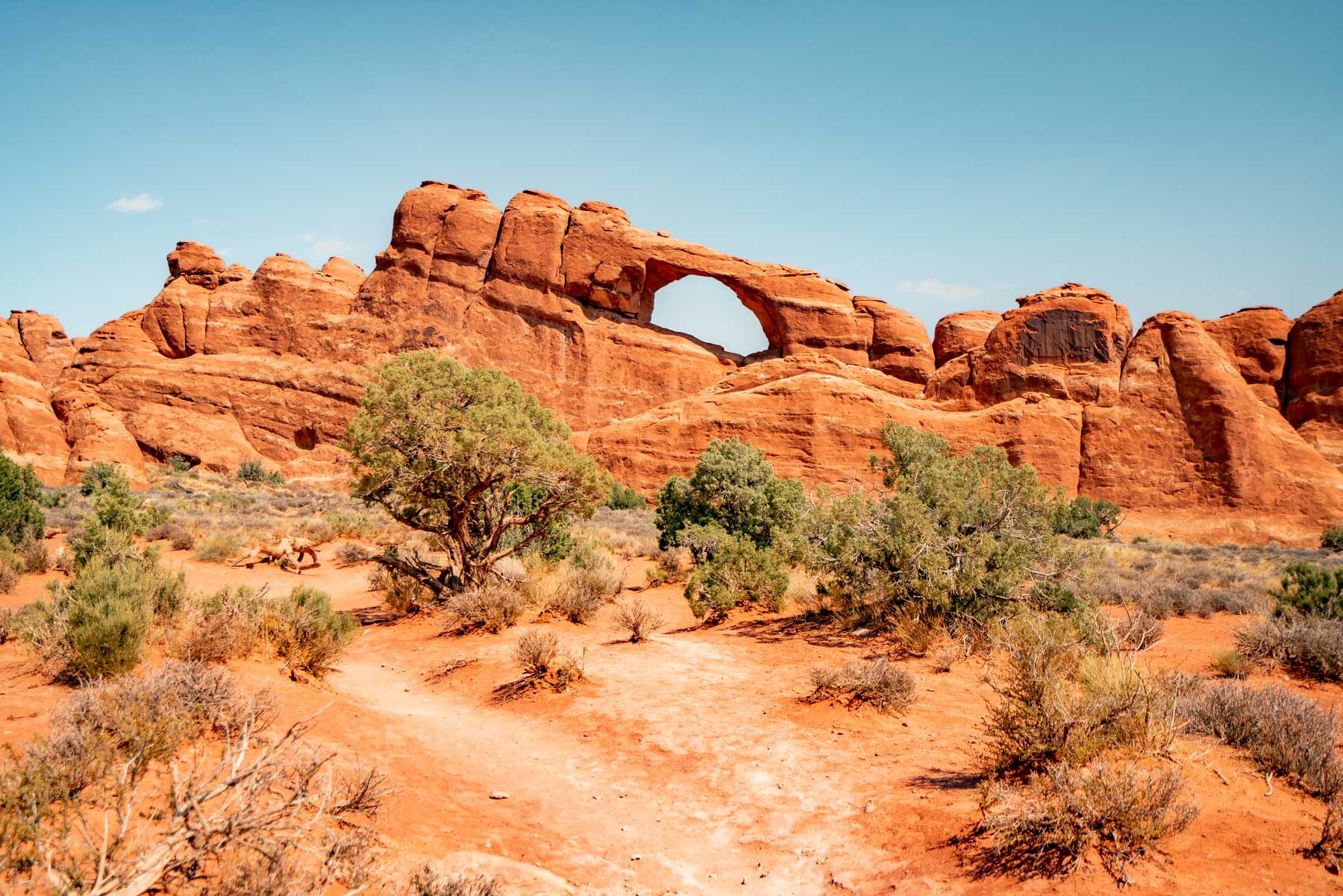
One of the most fascinating of the Arches National Parks Facts is that Arches National Park’s iconic arches are the result of the Paradox Formation. I’m a retired teacher of history rather than geology, but I’ll try to explain what that means without confusing or boring you.
Several hundred million years ago, the repeated evaporation of the inland seas created a magnificent salt bed. It was 200 miles long and 115 miles wide. Geologists have called it the Paradox Formation.
The park’s magnificent arches were formed by the upwelling of this Paradox Salt Formation. These massive features formed as the Paradox Formation ascended through less dense bedrock.
It began to fracture the sandstones, which resulted in jointing at the points of least resistance. And this created these amazing arch-like structures which people from all over the world come to admire and explore.
Entrada Sandstone

All of the park’s unique reddish brown or pale orange arches are Entrada Sandstone. They were originally deposited in the sea as sand some 235 million years ago. Now that’s a long time!
The most well known Entrada Sandstone Formation is the Delicate Arch. It rises 60 feet high and is topped off with a Curtis Sandstone Formation that came from ancient sand dunes.
Here’s another interesting fact about this particular arch. It has been featured as a U.S. Postage Stamp and on Utah license plates.
2. Arches Has The Densest Concentration Of Natural Stone Arches In The World
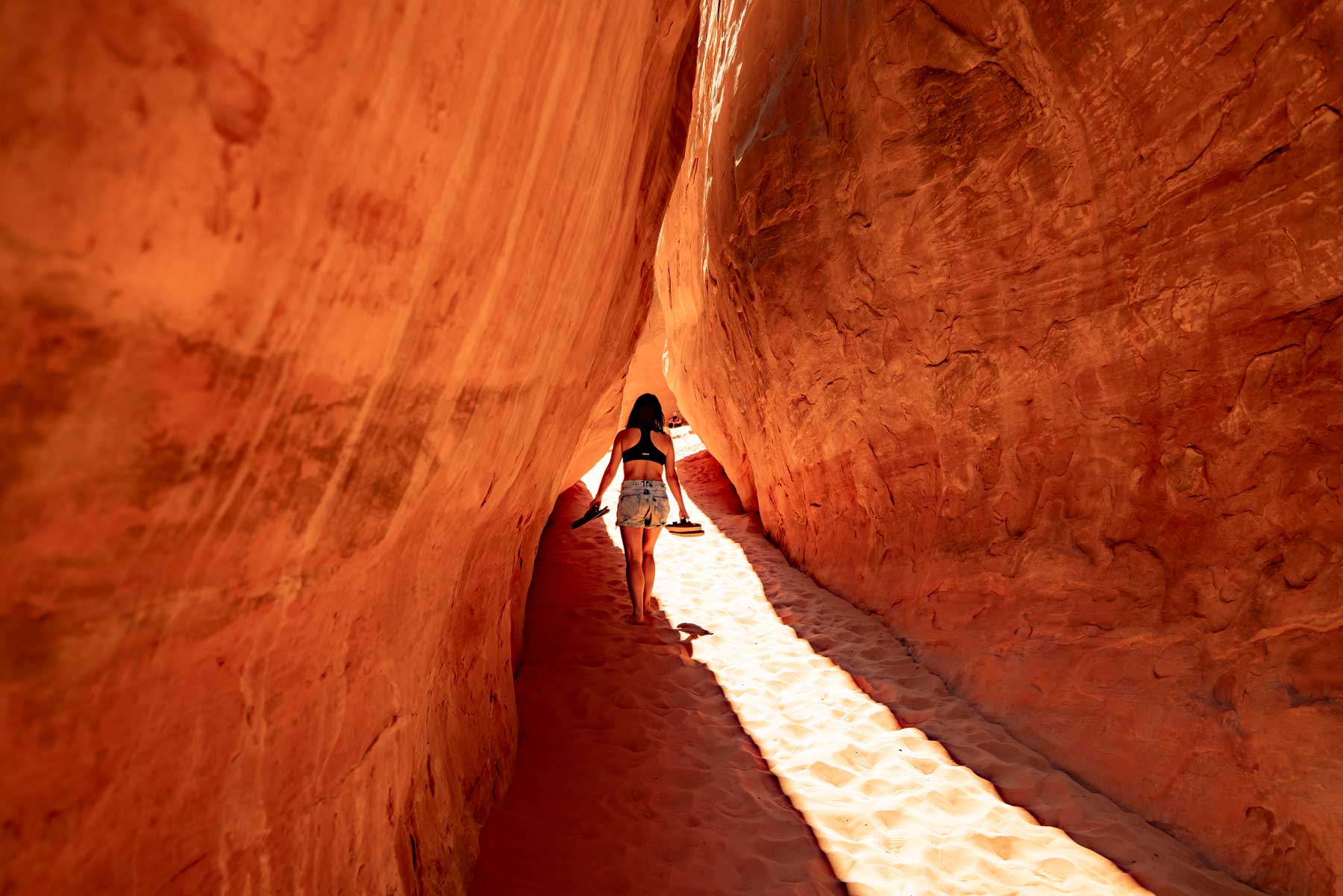
Arches National Park has the densest concentration of natural stone arches in the world. That’s another of the fascinating Arches National Park Facts.
There are over 2,000 documented arches in the park, plus pinnacles, balanced rocks, fins and other geologic formations.
If you’re interested in exploring all of them then good luck. It would take weeks to hike to and investigate each of these geologic wonders.
You should be forewarned, however, that the park’s desert location can make it a difficult place to hike in the summer sun when it often reaches over 100 degrees during the day.
I would recommend, instead, taking the Arches Scenic Drive, which is 19 miles in length. It’s the one road that travels through the park. Along the way, you’ll be able to see many magnificent arches.
Some Arches I Recommend Seeing
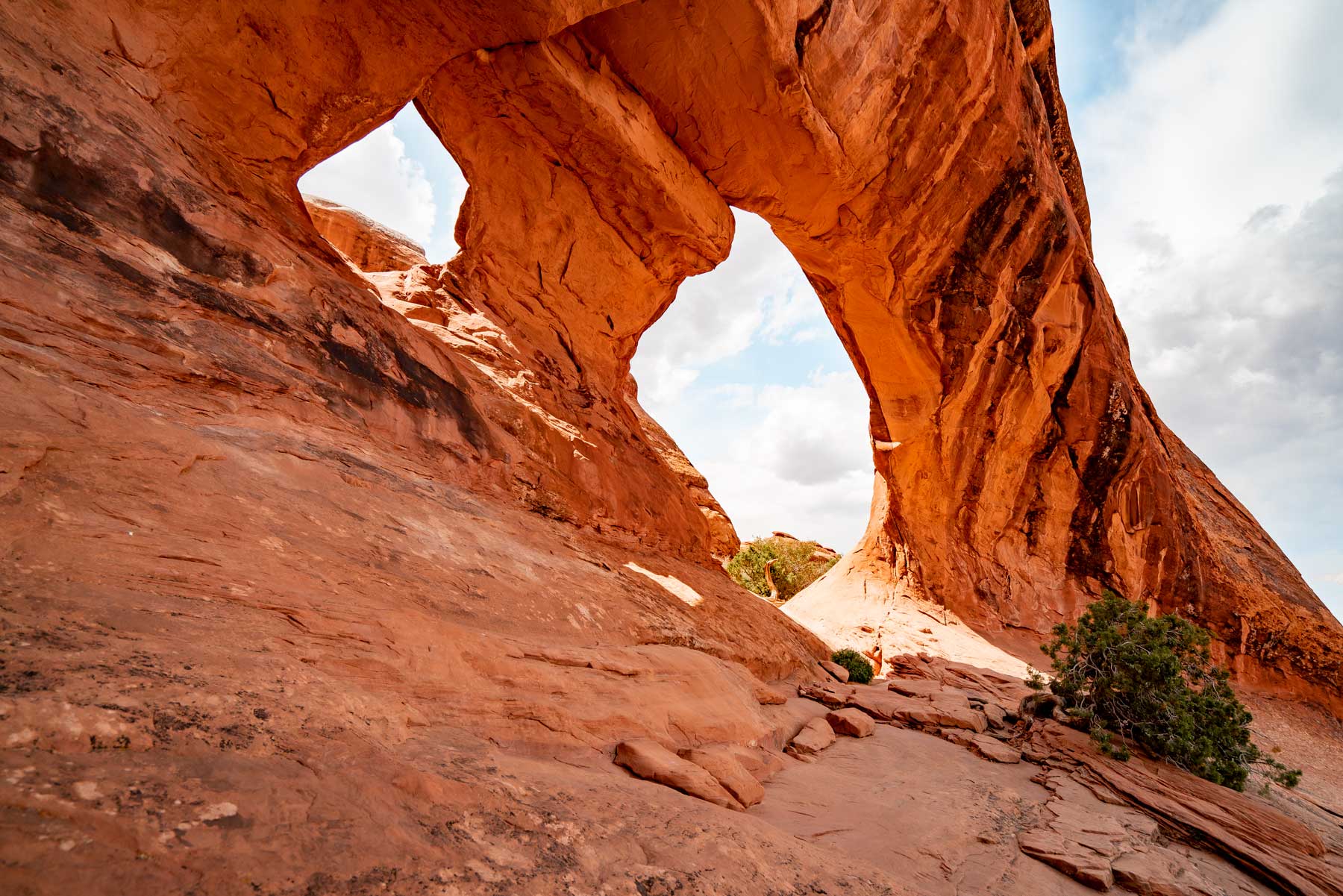
While you’re there, I definitely recommend that you check out the following arches:
Delicate Arch is the iconic arch everyone plans their trip around. The hike up to Delicate Arch isn’t a walk in the park as it involves a solid incline and a bit of navigating the sandstone, but it’s more than doable for most visitors.
Landscape Arch is the largest arch on earth spanning some 306 feet of weathered sandstone. This one is an easy 1.5 mile round trip and a must on your Arches trip.
Double O Arch featured in the image below is a very unique arch on top of an arch. This 4.1 mile out and back hike is a bit more strenuous, especially in the summer heat, so plan accordingly and bring plenty of water.
3. Evidence Suggests Humans Occupied Arches As Early As 10,000 B.C.
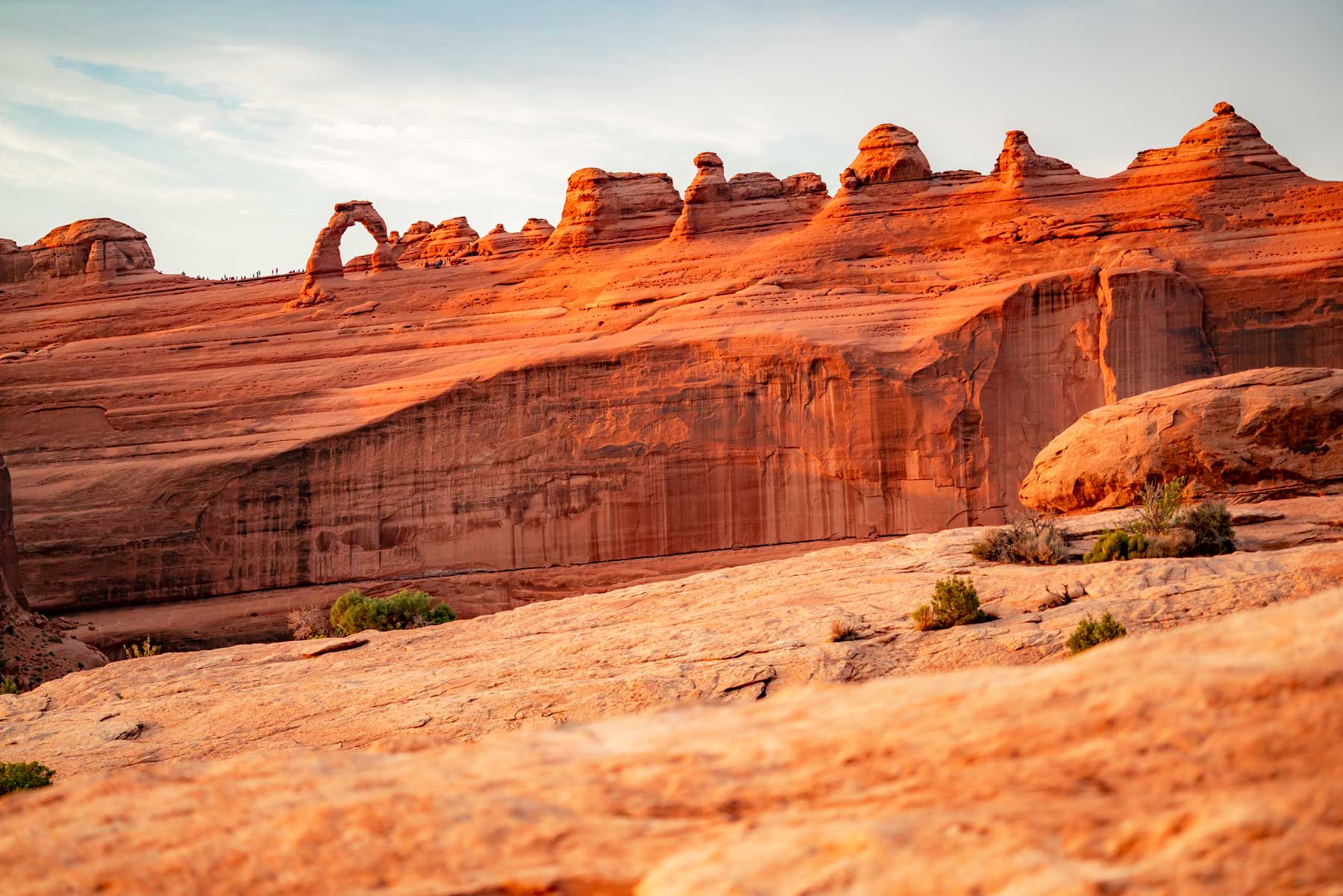
Now here’s another one of those amazing Arches National Park Facts. The first people to come to this area were the prehistoric Indians. Hunter-gatherers migrated into the area about 10,000 years ago at the end of the Ice Age.
They found pockets of chert and chalcedony, which are microcrystalline quartz perfect for making stone tools. Chipping or knapping these rocks into dart points, knives, and scrapers, they created debris piles that are still visible to the trained eye.
Then, approximately two thousand years ago, the nomadic hunters and gatherers began cultivating certain plants and settled into the Four Corners region.
These early agriculturalists, known as the ancestral Puebloan and Fremont people, raised domesticated maize, beans, and squash, and lived in villages like those preserved at Mesa Verde National Park.
4. There Are Between Four & Five Hundred Plant Species In Arche
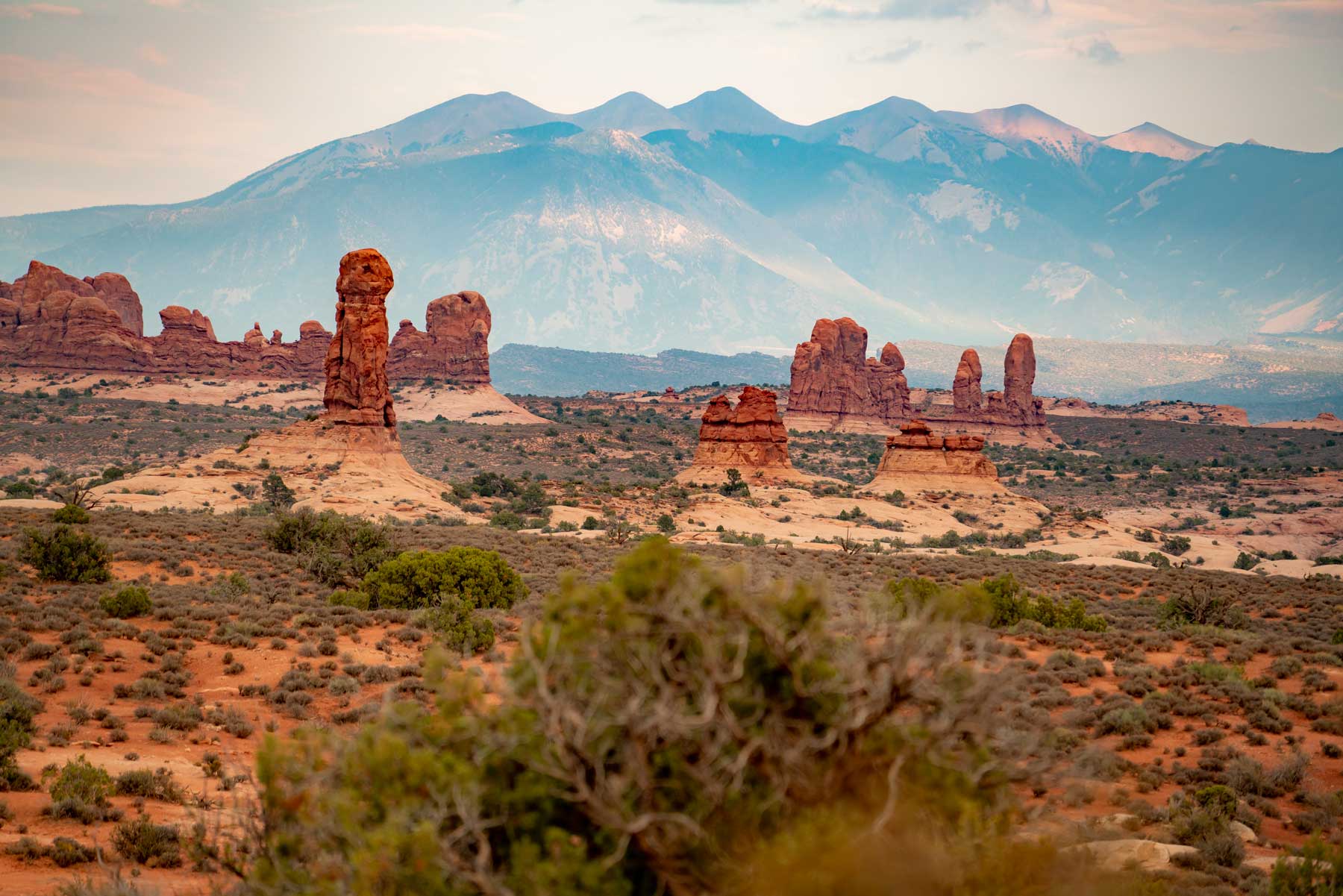
Believe it or not, between four and five hundred species of plants can be found in Arches National Park! That’s a surprising amount of plants for a desert park (at least in our opinion). And perhaps one of the most remarkable of the Arches National Park Facts.
These plant species include:
- Cacti / Desert Succulents.
- Grasses.
- Mosses and Liverworts.
- Trees and Shrubs.
- Wildflowers
Shrubs and trees are limited by the lack of water so they must disperse in order to survive. Once established, however, these desert plants are tenacious.
Their roots will split rocks in search of nutrients. Many can survive and flourish for over 100 years.
5. The Park Features A Surprising Amount of Animal Life

Just when you thought we couldn’t come up with any more unbelievable Arches National Park Facts we’ve come up with another one. Given the environment of Arches with summer temperatures which often exceed 100ºF, you would think that animal life at the park is practically nonexistent. And you would be wrong.
Animals, like humans, are able to adapt to their environment. At Arches there are several nocturnal animals including mountain lions, bats, owls, foxes, kangaroo rats, packrats, skunks, ringtails, and bobcats.
A few desert animals are primarily active during the day, or “diurnal.” These include rock squirrels, antelope squirrels, chipmunks, lizards, snakes, hawks, and eagles. Many animals have a temperature range in which they are active, so alter their active times of day depend on the season.
Snakes and lizards go into an inactive state of torpor during the winter, are active during the day during the late spring and early fall, and become crepuscular during the heat of summer.
The park’s most visible animals are its birds—peregrine falcons, which nest in the park, turkey vultures, hawks, great blue herons, ravens and eagles.
Top 11 Arches National Park Facts
6. Arches National Park Appears In The Opening Scene Of Indiana Jones & The Last Crusade
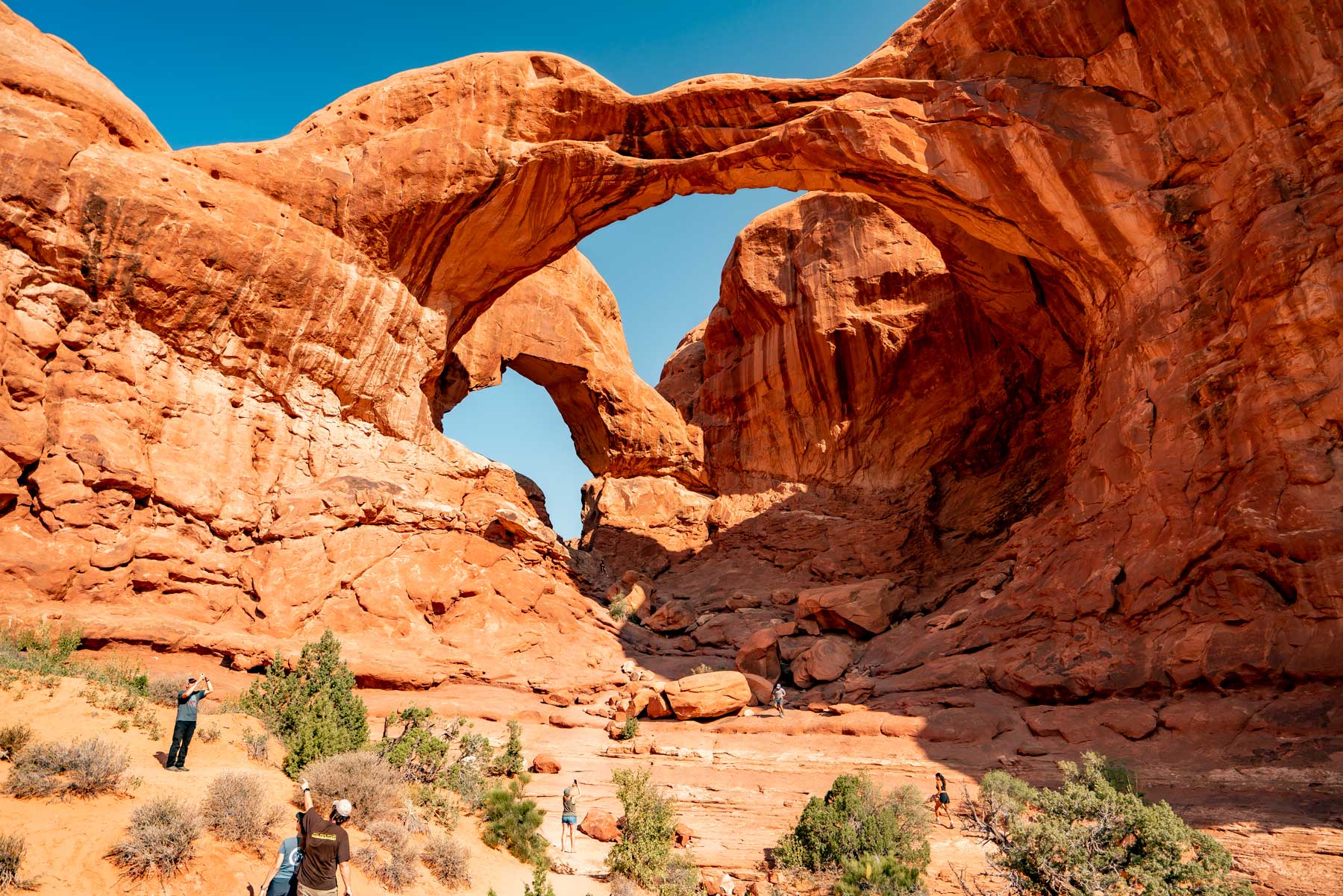
Long before he became a globe-trotting legend and America’s best known archeologist, Indiana Jones first learned his craft at Arches National Park in Utah. Do you remember when Young Indiana and his hapless friend stumbled on a band of thieves?
Those brigands forgot the number one rule of archeology. Priceless artifacts belong in a museum.
Here’s A Fun Fact
Did you know that Indiana Jones was originally named Indiana Smith? Steven Spielberg objected, however, because Indiana Smith was too close to Nevada Smith, which had been the name of a popular 1966 Steve McQueen western.
George Lucas, who created the character, wanted the name to be as common as possible so Lucas, Spielberg and screenwriter Lawrence Kasdan all decided that “Jones” would do instead. What’s in a name? Just ask Harrison Ford.
Just another one of those amazing Arches National Park Facts.
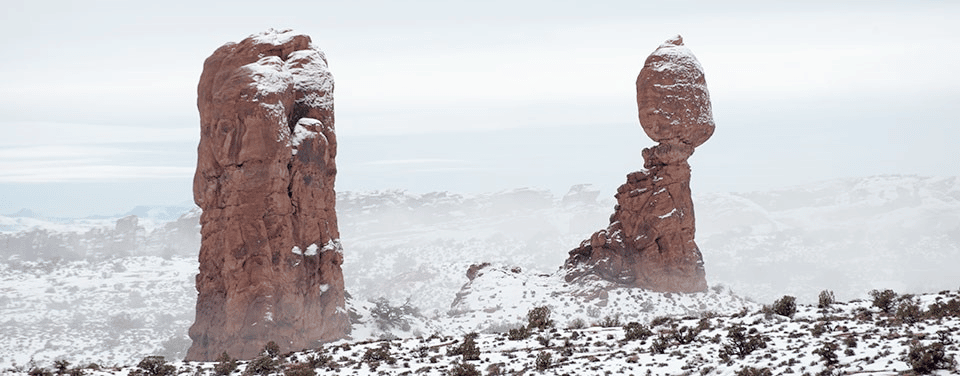
RELATED: 10 BEST National Park Road Trips
7. Arches Is Also Prominently Featured In One Of the Greatest “Chick Flicks” Of All Time
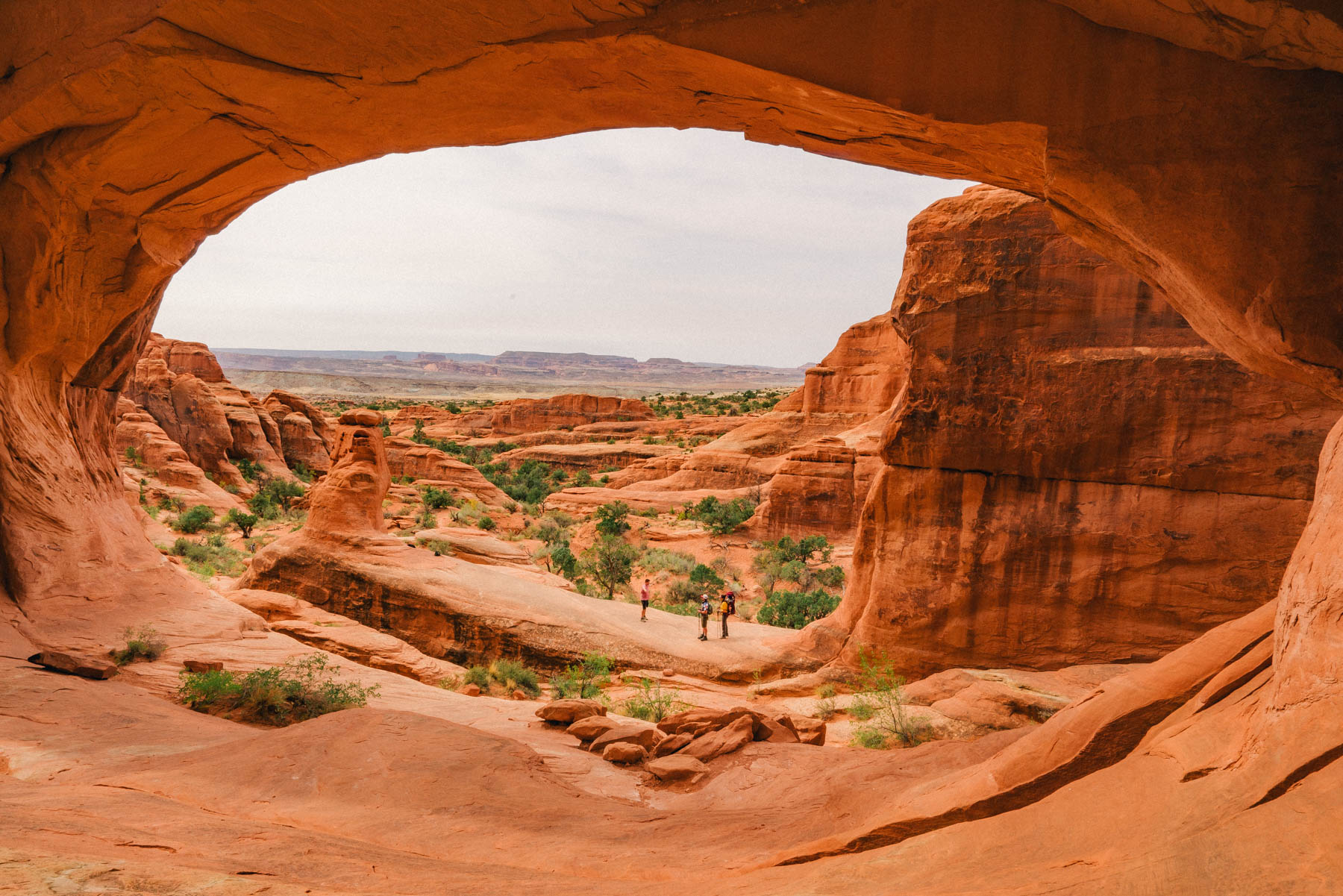
As long as were on the subject of films, how about a film which some critics have called the “greatest chick flick” of all times.
Thelma and Louise was a buddy film where the two pals were actually two gals. If you’ve seen this film then you know that these were no ordinary ladies. They were two women on a mission.
To learn more about which national parks played cameo roles in some of Hollywood’s biggest movies check out More Than Just Parks article on 25+ Classic Movies Filmed In The National Parks.
And Let’s Not Forget Brad Pitt
It’s the story of a meek housewife named Thelma (Geena Davis) who joins her friend Louise (Susan Sarandon), an independent waitress, on a short fishing trip. However, their trip becomes a flight from the law when Louise shoots and kills a man who tries to rape Thelma at a bar. Louise decides to flee to Mexico and Thelma joins her.
On the way, Thelma falls for sexy young thief J.D. (Brad Pitt). Meanwhile, the sympathetic Detective Slocumb (Harvey Keitel) tries to convince the two women to surrender before their fates are sealed.
While the story takes place on a road trip that’s supposedly from Arkansas to Arizona, much of the movie was actually filmed in Utah. And Arches National Park figures prominently in the story of these two amazing gals.
Shortly after entering the park, you’ll pass a cluster of soaring rock formations called the Courthouse Towers. This is the spot where Thelma and Louise, pulled over for speeding, decide to take the trooper’s gun and leave him in his car trunk.
To learn more about which national parks played cameo roles in some of television’s most beloved series check out More Than Just Parks article on 10+ Classic Television Shows Filmed In The National Parks.
8. At Arches, You Can See The World’s Largest Spectacles

Arches National Park features a geologic wonder known as the Spectacles. These are two arches which stand side by side, though separated by some distance. They’re cut from the same sandstone fin.
A large “nose” separates the Spectacle arches visually from the southwest, made of a gigantic fin remnant over 100 feet wide. It’s a truly amazing sight and the largest pair of spectacles you’re likely to ever to see.
Just another one of those amazing Arches National Park Facts.
9. Arches Has Paintings That Are Between 1,500 & 4,000 Years Old

For our 40th anniversary, I took my wife to Italy to tour the museums and celebrate the work of Renaissance artists whose paintings were hundreds of years old. Imagine paintings that are thousands of years old.
Of course, you don’t have to imagine if you travel to Arches National Park. There you can examine rock paintings that are between 1,500 and 4,000 years old.
There you will see figures that were engraved by removal of the rock’s covering of desert varnish. The painted figures follow the Barrier Canyon Style and are believed to be between 1500 and 4000 years old.
To find these paintings, you follow the stream to the Lower Courthouse Wash trail.
10. A Park Ranger’s Experience At Arches Led Him To Write An Environmental Classic

When it comes to incredible Arches National Park Facts, one of my favorites is the story about author and conservationist Edward Abbey. He loved the desert of the Southwest. The time that Abbey spent there as a park ranger in 1956 and 1957 in what was then Arches National Monument inspired him to write a book. And what a book it was!
Titled, “Desert Solitaire: A Season in the Wilderness,” Abbey’s book was published in 1968. It became an overnight classic and one of the most influential works of the environmental movement.
As the New York Times noted in its assessment of Abbey’s work, “Every gleaming page of Abbey’s autobiography virtually shouts out the necessity of protecting our public lands from desecration, and sings the nobility of wilderness defenders whose intrinsic value system rejects the sweating scramble for profit and domination.”
Industrial Tourism
In the book, Abbey reveals his fierce devotion to the desert’s wild landscapes and equally fierce opposition to something he called “industrial tourism” where development, including visitor centers and roads, is the center of people’s “nature” experiences rather than nature itself.
Abbey believed that in order to save wilderness, we must stop trying to understand, explain, and reduce wilderness. Instead of comprehending earth in terms of the human world, he said that the answer is to let earth exist as it is.
Abbey’s Desert Solitaire drew favorable comparisons to Aldo Leopold’s A Sand County Almanac and Rachel Carson’s Silent Spring. These important works transformed the genre of naturalist studies into manifestoes for social change.
To learn more about Edward Abbey and his legacy, I recommend: All the Wild That Remains: Edward Abbey, Wallace Stegner, and the American West by David Gessner.
“The desert wears… a veil of mystery. Motionless and silent it evokes in us an elusive hint of something unknown, unknowable, about to be revealed. Since the desert does not act it seems to be waiting — but waiting for what?”
– Edward Abbey, 1968
11. The Old Spanish Trail Went Through Arches National Park Visitor Center
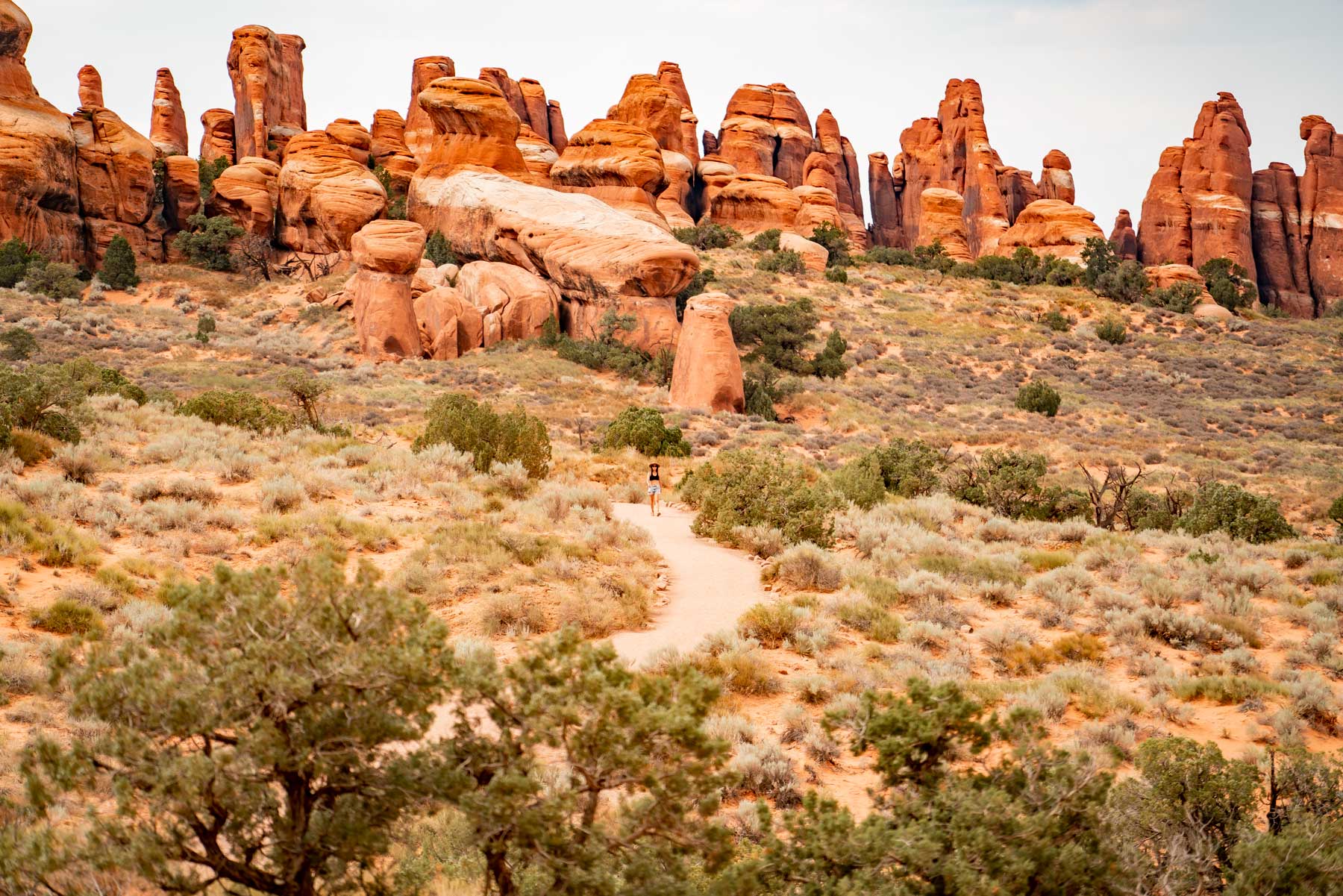
The Old Spanish National Historic Trail goes through Arizona, California, Colorado, Nevada, New Mexico, and Utah. It opened a land route across 19th century Mexico between the Tierra Adentro, the fabled, yet isolated place that would become New Mexico, and California’s missions and burgeoning settlements.
When he left Abiquiu, New Mexico for California in 1829 with 40 men and 200 pack mules, Antonio Armijo blazed a trail between the two colonies that had frustrated explorers for over a century.
The Abiquiu Party discovered that their woolen blankets and tanned hides were welcomed in textile-starved California. What began as a commercial venture would grow into so much more.
Today this historic trail extends 2,700 miles across New Mexico, Colorado, Utah, Arizona, Nevada, and California. Along the way there are museums, historic sites, landmarks, and trail markers.
And, believe it or not, its route went directly past what is today’s Arches National Park Visitor Center.
Just another one of those amazing Arches National Park Facts!
Why Trust Us About Arches National Park?
We’re Jim Pattiz and Will Pattiz, collectively known as the Pattiz Brothers (and sometimes the Parks Brothers) and we absolutely LOVE the national parks.
You should probably know that we don’t just make this stuff up out of thin air. We’ve spent our entire adult lives exploring and filming America’s national parks and public lands.
We’ve worked with the National Park Service, the Department of Interior, USDA, and the U.S. Forest Service for years creating films on important places and issues. Our work has been featured in leading publications all over the world and even some people outside of our immediate family call us experts on the national parks.

Meet The Parks Brothers
Map Of Arches National Park
List Of Arches National Park Facts
- The Stunning Geography Is The Result Of the Paradox Formation
- Arches Has The Densest Concentration Of Natural Stone Arches In The World
- Evidence Suggests That Humans Occupied Arches As Early As 10,000 B.C.
- There Are Between Four & Five Hundred Plant Species In Arches
- The Park Actually Features Animal Life
- Arches Appears In The Opening Scene Of Indiana Jones & The Last Crusade
- Arches Is Also Prominently Featured In One Of the Greatest “Chick Flicks” Of All Time
- At Arches, You Can See The World’s Largest Spectacles
- Paintings That Are Between 1,500 & 4,000 Years Old
- A Park Ranger’s Experience At Arches Led Him To Write An Environmental Classic
- The Old Spanish Trail Went Through Arches Visitor Center
We Hope You’ll Follow Our Journey

Our goal here at More Than Just Parks is to share the beauty of America’s national parks and public lands through stunning short films in an effort to get Americans and the world to see the true value in land conservation.
We hope you’ll follow our journey through the parks and help us to keep them the incredible places that they are. If you’re interested in joining the adventure then please sign up below!
Helpful Related Articles
Things to Do Canyonlands: 20 Epic Things to Do in Canyonlands National Park


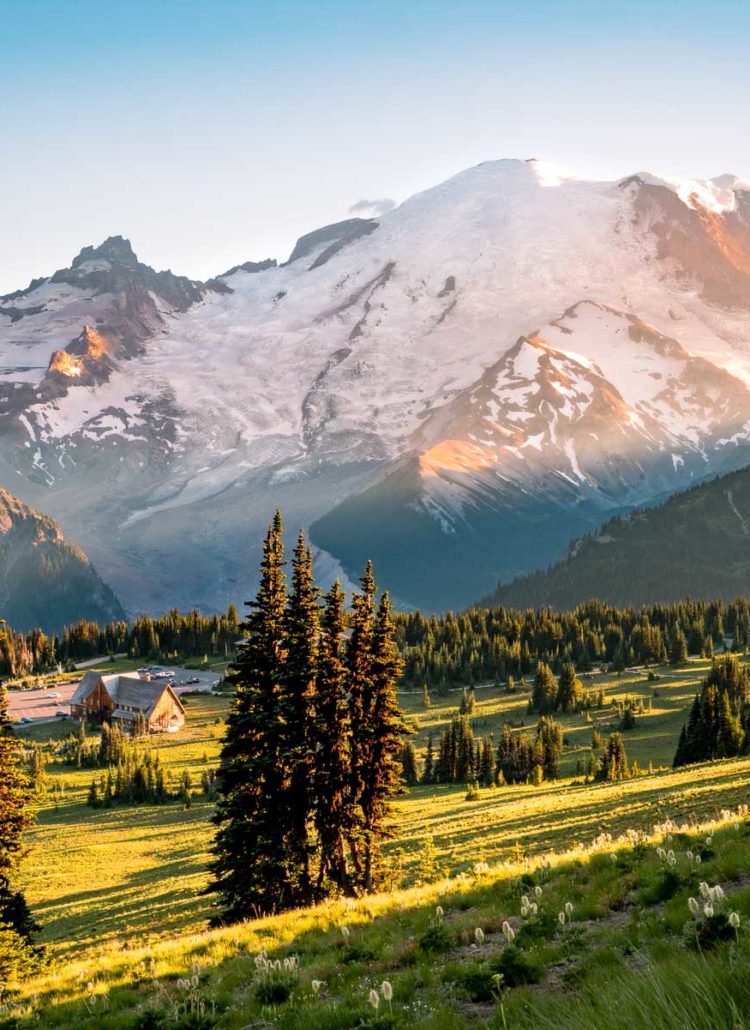


Leave a Reply